Coffee in Japan: Kissaten, Vending Machines, Trendy Cafes & More
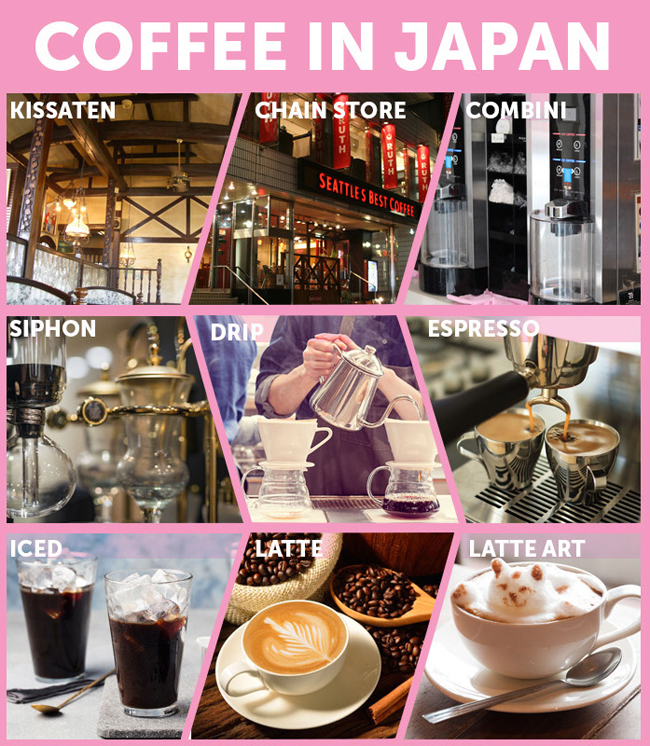
Tea and sake may be the most well-known Japanese beverages, but coffee is also a big part of daily life in Japan. Japan’s coffee culture dates back to the 1600s, when coffee first arrived via Dutch and Portuguese trade ships. Today, coffee is a billion dollar industry in Japan, and a variety of types of coffee are sold everywhere from convenience stores to trendy cafes. Here’s a guide to discovering all about coffee in Japan.
Japanese Coffee & Cafe Culture Is Rich and Diverse
Where to Drink Coffee in Japan

Not long after coffee’s introduction to Japan, the first Japanese cafes began to appear. Called “kissaten”, these cafes were a sort of lounge for artists and poets inspired by French salons.

Photo by Yosshi (Flickr)
Over time, kissaten became a place to enjoy a hot cup of Japanese coffee, a slice of cake, and a bite to eat while listening to music or meeting for a business deal. Kissaten culture peaked in the 1980s with the bubble economy, but today there are a number of these old-school coffee shops still around, imbued with a sort of Showa-era charm that’s definitely worth a visit for any coffee enthusiast.
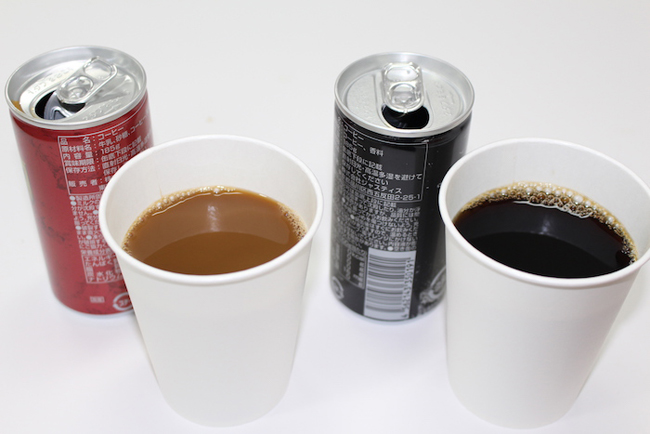
More common these days are the modern coffee chains. Over the past few decades, major western coffee chains have inspired numerous Japanese clones, and it’s difficult to walk a city block without encountering one. For those rare occasions when there isn’t a café nearby, however, vending machines are another convenient source of coffee in Japan. Canned coffee was invented in the 1960s, followed a decade later by vending machines that could store hot and cold drinks, and now vending machines stocked with coffee are a common sight throughout the country.
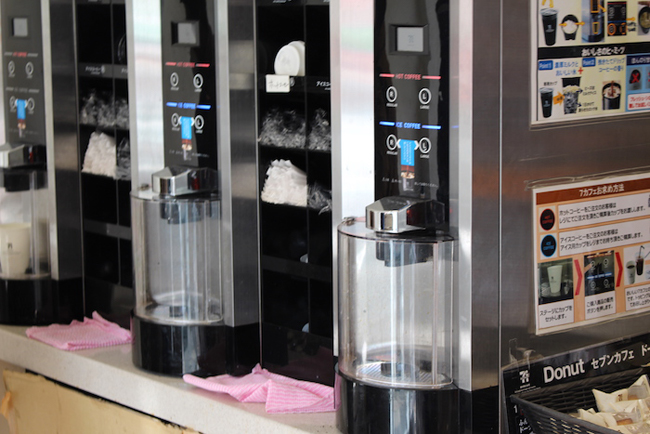
Another quick alternative to Japanese coffee chains is the coffee sold in convenience stores, or “combini”. Made by automated coffee machines that work at the touch of a button, combini coffee is a less expensive alternative to coffee from cafés and coffee chains. The various convenience store brands have been under stiff competition with each other, installing machines that are capable of producing a fresh cup of coffee for under two hundred yen.
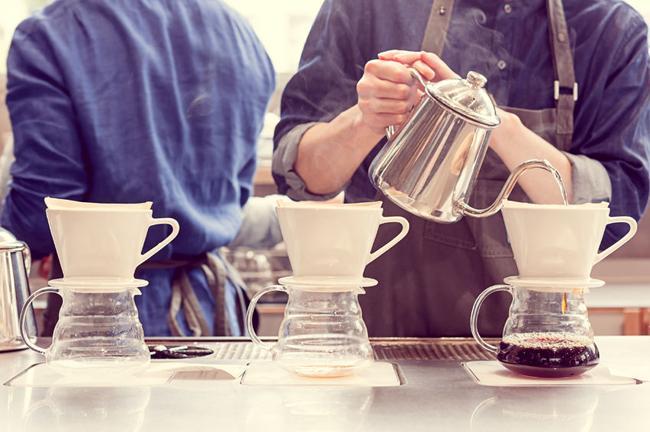
On the other end of the spectrum from vending machine and combini drinks, coffee is becoming more sophisticated in Japan with the growing popularity of “third-wave coffee” over the past decade. Third-wave coffee is a movement that aims to treat coffee not as a drink of convenience, but as an artisanal beverage like fine wine or craft beer.
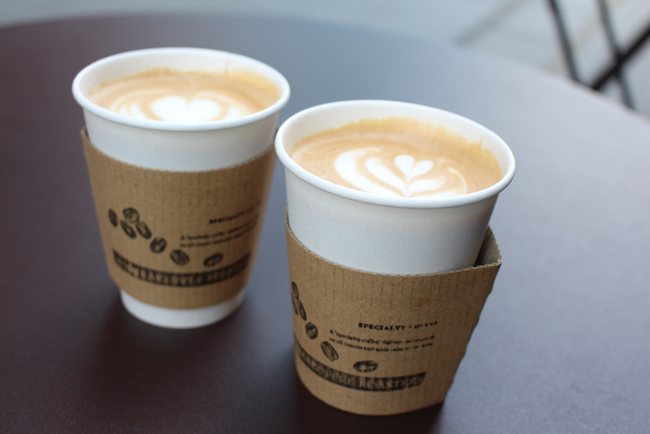
Skillful baristas in Japan are applying the same obsessive dedication and focus to their craft attached to traditional Japanese arts such as tea ceremony, calligraphy, and even swordsmanship. It’s not unknown for Japanese baristas to spend several years working in countries like Australia to improve their craft and latte art technique. In addition to working at kissaten, third-wave coffee baristas are founding their own independent coffee houses, often using traditional kissaten equipment.
How Coffee Is Prepared in Japan

Two traditional kissaten techniques, which are now being imitated by third-wave coffee shops the world over, are the siphon method and the pour-over. Siphon coffee uses a vacuum brewing method featuring a two-pot apparatus that looks like something out of a science lab, while Japanese pour-over coffee uses a long-necked kettle that slowly pours hot water over freshly ground coffee. Both methods brew a no-frills cup of coffee that draws incredible flavor from the beans.
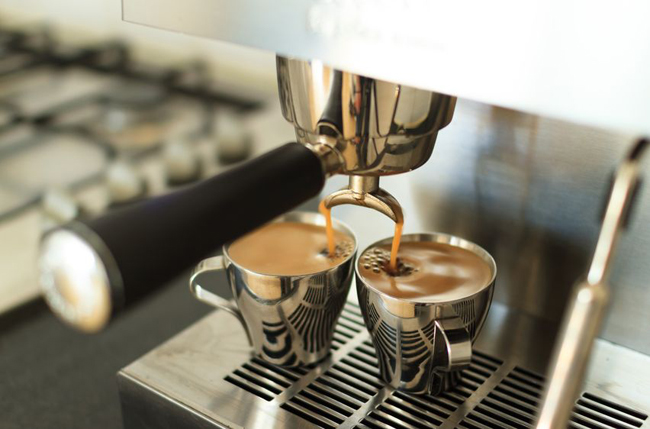
If espresso and lattes are more your thing, don’t be surprised to find top-of-the-line Italian espresso machines behind the counter of even the tiniest independent coffee house in Japan. These machines force a high-powered stream of hot water through finely ground beans, resulting in a small shot of espresso with a layer of light colored, richly flavorful coffee foam called “crema” on top.

While a good espresso can be served within minutes, cold-brew coffee is made by infusing ground coffee in cold or room temperature water over several hours. It’s actually the oldest coffee brewing method in Japan, introduced by the Dutch in the 17th century. Coffee made this way is sometimes referred to as “Kyoto-style coffee”, after the tall tower-like glass apparatus that were popularly sold in Kyoto for cold-brewing.
Popular Types of Coffee in Japan
Due to its convenience and affordable price, canned coffee is one of the most widely consumed types of coffee in Japan. Vending machines sell both iced and hot canned coffees depending on the season—typically black and unsweetened, although black coffee with sugar, as well as coffee with cream and sugar can also be found in canned form. You can expect to find multiple varieties and brands of canned coffee sold within a single vending machine, and many popular brands of canned coffee in Japan even have advertisements featuring Hollywood celebrities.

At Japanese cafes and restaurants, one of the most popular drink options for a “lunch set” is iced coffee served with a bit of milk or creamer and simple syrup. Compared to cold-brew coffee, however, iced coffee in Japan is actually made with hot water. A small volume of hot water is used for a more concentrated brew that’s poured directly over ice. The hot water extracts the flavor of the coffee beans, while simultaneously melting the ice to balance the amount of water in the brew, which results in an iced coffee with a brighter and more dynamic flavor.

For those with a little more time on their hands, a café latte made with espresso and steamed milk is one of the top drinks enjoyed at Japanese cafés and coffee houses. In the past few years, latte art made by pouring steamed milk in the shape of fern leaves, hearts, and flower petals has started to become popular in Japan. Some Japanese cafés have even put a kawaii spin on their latte drinks with 3D latte art, made with sculpted milk foam in the shape of cute puppies, kittens, bunnies, and even beloved anime characters.
Enjoy Coffee in Japan at Anywhere from Traditional Japanese Cafes to Third-Wave Coffee Shops
Whether you’re looking for a quick boost to keep you energized through a long day of sightseeing, or you’re a coffee connoisseur chasing a fine siphon or pour-over coffee, Japan offers a wide variety of expertly made coffee that you won’t want to miss.

